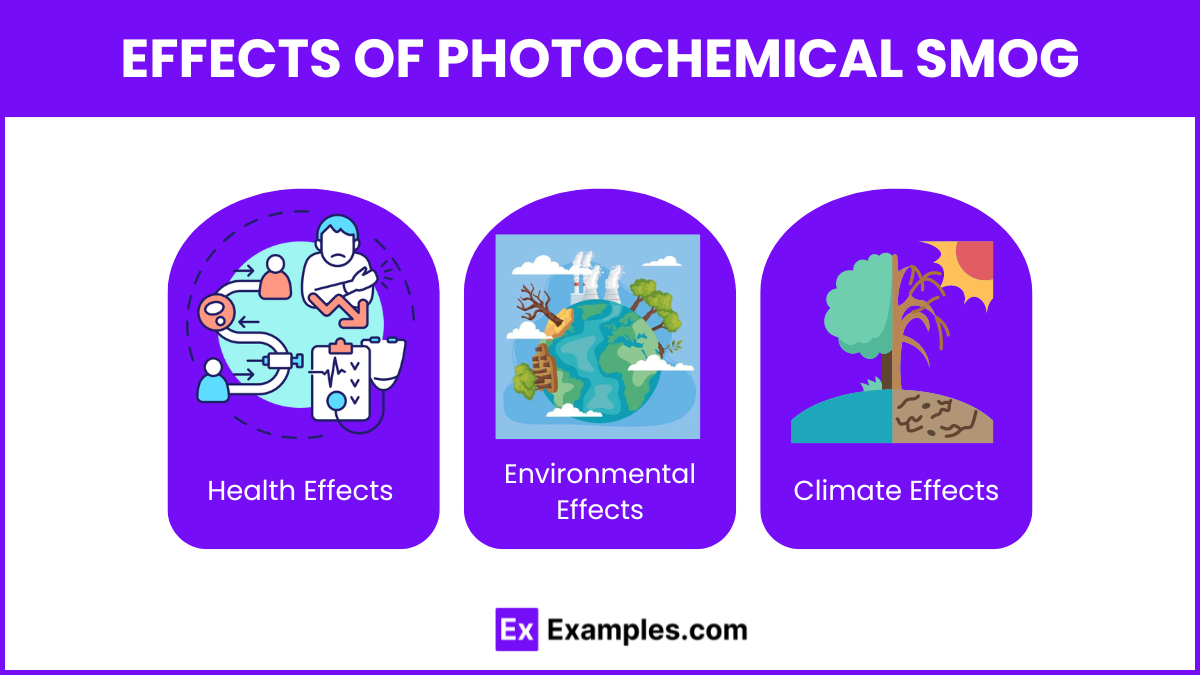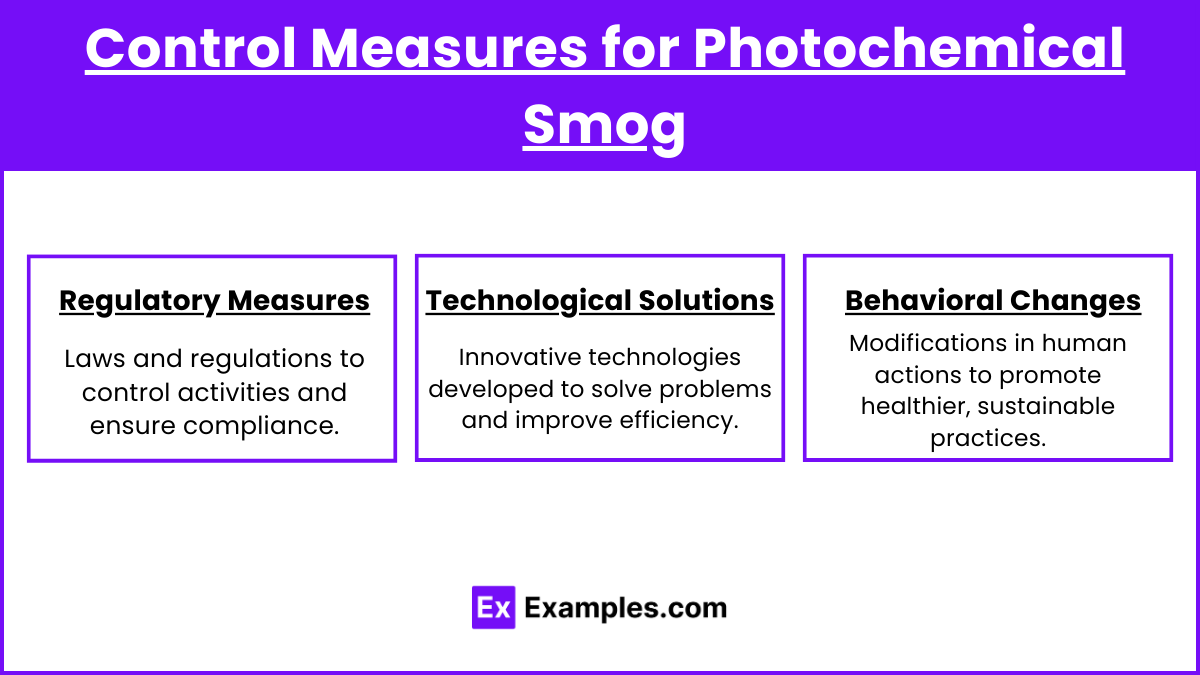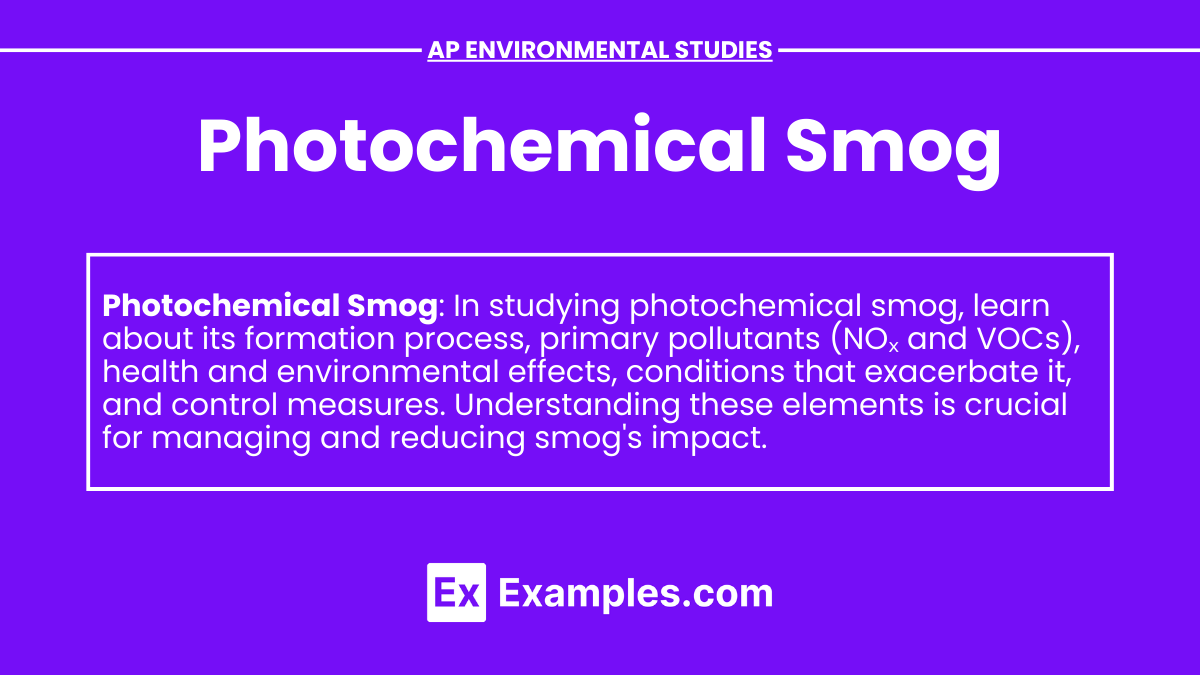Photochemical smog, a critical topic in AP Environmental Science, affects our ecology, ecosystem, and biodiversity by introducing harmful pollutants into the biosphere. Formed by the reaction of sunlight with nitrogen oxides (NOₓ) and volatile organic compounds (VOCs), it creates a toxic haze that impacts air quality, human health, and the environment. Understanding photochemical smog is essential for protecting and preserving the intricate balance within our biosphere and maintaining the health of diverse ecosystems.
Learning Objectives
By studying photochemical smog, students will understand its formation and impacts on organisms, including human health. They will learn how smog contributes to climate changes and affects flora and fauna, disrupting natural habitats and ecosystems. Additionally, students will explore strategies to reduce photochemical smog, such as regulatory measures and technological innovations. This knowledge is crucial for mitigating the adverse effects on living organisms and promoting environmental sustainability amidst ongoing climate changes.
Formation of Photochemical Smog

Photochemical smog forms through a complex series of reactions involving sunlight, NOₓ, and VOCs. The main steps include:
- Emission of NOₓ and VOCs: Major sources include vehicle exhaust, industrial emissions, and the use of solvents and gasoline.
- Photolysis of NO₂: In the presence of sunlight, nitrogen dioxide (NO₂) breaks down into nitric oxide (NO) and a free oxygen atom (O).
- NO₂ + sunlight → NO + O
- Formation of Ozone (O₃): The free oxygen atom reacts with molecular oxygen (O₂) to form ozone.
- O + O₂ → O₃
- Reactions with VOCs: VOCs react with NO to form peroxyacetyl nitrates (PANs) and other secondary pollutants.
- VOCs + NO → PANs + other pollutants
- Accumulation of Pollutants: These reactions lead to the accumulation of ozone and other oxidants in the lower atmosphere, resulting in photochemical smog.
Characteristics of Photochemical Smog
- Brownish Haze: Due to the presence of NO₂ and other pollutants.
- Occurrence: Common in urban areas with high traffic and industrial activity, especially in sunny, warm climates.
- Peak Times: Typically worse during late morning and afternoon when sunlight intensity is highest.
Effects of Photochemical Smog

Health Effects
- Respiratory Problems: Irritation of the respiratory tract, exacerbation of asthma, bronchitis, and other lung diseases.
- Eye Irritation: Causes burning and watering of the eyes.
- Cardiovascular Issues: Increased risk of heart attacks and other cardiovascular problems.
Environmental Effects
- Damage to Vegetation: Ozone can damage plant tissues, reduce photosynthesis, and stunt growth, affecting crops and natural vegetation.
- Reduced Visibility: The smog creates a haze that reduces visibility, affecting transportation and outdoor activities.
- Material Degradation: Accelerates the deterioration of buildings, monuments, and other structures.
Climate Effects
- Contribution to Climate Change: Some components of photochemical smog, such as ozone and certain VOCs, are greenhouse gases that contribute to global warming.
Control Measures for Photochemical Smog

Regulatory Measures
- Emission Standards: Setting limits on NOₓ and VOC emissions from vehicles, industrial sources, and other emitters.
- Air Quality Standards: Establishing and enforcing standards for ozone and other key pollutants.
Technological Solutions
- Catalytic Converters: Installed in vehicles to reduce NOₓ and VOC emissions.
- Vapor Recovery Systems: Used at gasoline stations to capture VOCs during refueling.
- Industrial Controls: Implementation of scrubbers, filters, and other technologies to reduce emissions from industrial processes.
Behavioral Changes
- Public Transportation: Encouraging the use of public transit, carpooling, and non-motorized transportation.
- Energy Efficiency: Promoting energy-efficient practices and appliances to reduce emissions from power generation.
- Awareness Campaigns: Educating the public about the sources and effects of photochemical smog and ways to reduce personal contributions.
Case Studies
- Los Angeles, California
- Historical Context: Severe smog episodes in the 1940s and 1950s.
- Measures Taken: Implementation of stringent air quality regulations, vehicle emissions standards, and public transportation initiatives.
- Outcomes: Significant reduction in photochemical smog levels, though challenges remain.
- Mexico City, Mexico
- Challenges: High altitude and sunny climate exacerbate smog formation.
- Measures Taken: Introduction of vehicle restrictions, emissions testing, and public transportation improvements.
- Outcomes: Improved air quality, though pollution levels still pose health risks


